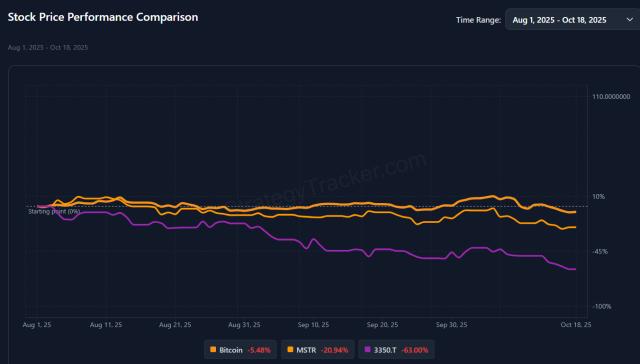This article will start from the CAMT tax system and its impact on crypto assets, and explore the possible impact and changes that the relaxation of CAMT taxation may have on corporate crypto asset taxation, in order to provide tax reference for the majority of crypto investors.
By FinTax Calix & Bill
Cover: Photo by Donovan Reeves on Unsplash
1. Introduction
On September 30, 2025, the U.S. IRS issued Notices 2025-46 and Notice 2025-49, providing interim guidance on CAMT. This is seen as relaxing the taxation rules for unrealized gains on crypto assets under the current corporate alternative minimum tax system. However, this relaxation applies only to digital assets (including crypto assets) held by businesses and excludes other items subject to CAMT. This adjustment directly addresses the issue of paper profits being taxed due to mark-to-market accounting. This means that even if unrealized, future appreciation in the book value of crypto assets held by most businesses may not be immediately taxed. This article will explore the potential impact and changes to the taxation of crypto assets by easing CAMT, focusing on the CAMT tax system and its impact on crypto assets, in order to provide tax guidance for crypto investors.
2. CAMT taxation system and its impact on crypto assets
2.1 Introduction to the CAMT System
CAMT (Corporate Alternative Minimum Tax) is a tax mechanism reintroduced in the United States with the passage of the Inflation Reduction Act of 2022 (IRA). It aims to ensure that large corporations pay at least a certain percentage of minimum tax, regardless of the number of tax deductions or credits they use. CAMT applies to companies with an average annual reported revenue of more than $1 billion over three years.
From its original legislative perspective, CAMT aims to prevent large, profitable companies from suppressing their taxable income excessively through tax planning and deductions. By setting a minimum tax rate, CAMT ensures that large companies maintain a minimum tax base even after utilizing various credits, thereby safeguarding government revenue. By imposing higher taxes on large companies, it can also direct more market resources toward small and medium-sized enterprises, maintaining a degree of market fairness. In short, the macroeconomic impact of CAMT lies primarily in preventing large companies from enjoying excessive advantages through tax loopholes and reducing the impact of economic cycles on government revenue, thereby achieving the goal of adjusting and stabilizing economic operations.
2.2 CAMT’s impact on crypto assets under current accounting standards
However, despite this legislative intent, the CAMT tax system has placed numerous unreasonable burdens on businesses holding cryptoassets. According to ASU 2023-08, issued by the U.S. Financial Accounting Standards Board, and IAS 38, issued by the International Accounting Standards Board, entities must measure cryptoassets at fair value and recognize any appreciation or depreciation in current profit or loss. This is because cryptoasset prices are highly volatile, and recording fair value more accurately reflects the true value of cryptoassets. However, fair value measurement also has a consequence: even if a business only holds cryptoassets, it may still reflect unrealized gains or losses on its books and financial statements. Due to the volatile price of cryptoassets, revaluing at market value can lead to significant volatility in corporate financial statements and fluctuations in the tax base.
Under this framework, if a cryptoasset's price appreciates during the holding period, even if the company doesn't sell it, it will be considered an unrealized gain and included in the current period's profit or loss. Without a specific exclusion, the CAMT mechanism will include these unrealized gains in the adjusted basis and, therefore, taxable. In short, even if a company holds cryptoassets and doesn't sell them, it still risks higher tax costs due to market appreciation.
2.3 The CAMT system triggers controversy over crypto asset taxation
The CAMT system's requirement to tax unrealized gains on held assets has sparked widespread controversy and some industry opposition in the crypto market. In May of this year, MicroStrategy (later renamed Strategy) and Coinbase jointly wrote a letter to the IRS urging the exclusion of unrealized crypto gains from taxation. Both companies argued that taxing paper gains could force companies to sell Bitcoin to pay taxes, putting US companies at a disadvantage in international competition and potentially sparking legal disputes over the taxation of unexisting income. Based on current market opinion, the main arguments against taxing unrealized gains are as follows:
2.3.1 Questions about the fairness of taxation
Before CAMT was enacted, the traditional U.S. tax system, based on the Internal Revenue Code of 1986 and related case law, generally only taxed realized income, not unrealized gains on paper. While traditional U.S. tax law typically levies tax when gains are realized or when certain income recognition criteria are met, CAMT's taxation period aligns with the reporting period of a company's financial statements. The IRS clarified in its explanation of CAMT that it is based on the AFSI and applies to fiscal years beginning after December 31, 2022. Because unrealized gains are highly uncertain, prices may fall after taxation, increasing the risk of mismatches between taxpayers and cash received. Taxing unrealized gains has sparked widespread questions about its fairness and rationality. MicroStrategy and Coinbase have explicitly opposed CAMT's taxation of unrealized crypto asset gains, citing the policy's perceived unfairness.
2.3.2 May increase cash flow pressure
The current CAMT tax may also put cash flow pressure on companies holding large amounts of crypto assets. MicroStrategy explicitly stated in its submission to the US IRS that if CAMT were to be imposed based on book appreciation, it could force companies to sell Bitcoin to pay the tax: CAMT is taxed based on changes in fair value reported on financial statements, not actual cash flows received by the company. When the fair value of crypto assets rises in the short term, a company's unrealized profits increase, leading to higher reported profits, but the company does not receive corresponding cash flow. If the government were to impose CAMT on a company at this time, the company would have to use its own cash reserves or liquidate assets to pay the tax. Therefore, imposing CAMT could increase cash flow outflows for companies. This mechanism could force companies to sell their coins at undesirable times to meet the tax, potentially leading to suboptimal asset allocation and disrupting their long-term investment strategies.
2.3.3 Weakening the competitiveness of the domestic encryption market
If the current US taxation system for unrealized gains on crypto assets remains unchanged, it could put the US crypto market at a disadvantage in global competition in the long term. Globally, taxing unrealized gains on held assets is not a common practice. Most countries typically only tax realized asset disposals, and unrealized book gains are generally not taxed. Some countries, such as Portugal, even exempt capital gains on long-term crypto holdings (e.g., over 365 days) from taxation to encourage long-term crypto asset holding. In contrast, if the US CAMT tax system imposes an excessively high tax burden on crypto companies over the long term, these companies, especially large ones, are likely to move to countries and regions with lower tax burdens, ultimately weakening the US's dominant position in the crypto asset industry.
2.3.4 There are several legal disputes
MicroStrategy and Coinbase highlighted constitutional disputes. Taxing unrealized gains may raise questions about the legality of taxation: The term "income" is generally interpreted in tax law and the U.S. Constitution as meaning actual or receivable economic benefits. Whether unrealized gains, which have not yet been realized, can be considered income remains controversial. Furthermore, in extreme market volatility, post-tax losses may lead to tax refund disputes or legal remedies. After a company pays tax on unrealized gains under CAMT or similar rules, if asset prices rapidly decline or the asset is ultimately sold, resulting in a net loss, the parties involved may claim overpayment and request a tax refund. The time-consuming tax refund process imposes on companies, exacerbating their financial pressures. This is especially true when companies need to file lawsuits against the IRS. Besides the time cost, litigation fees also incur. Furthermore, the need to pay taxes before filing lawsuits further strains their cash flow.

3. Policy Adjustment: Major Changes in Crypto Asset Taxation
3.1 Current Policy Trends
The IRS has issued two interim guidances—Notice 2025-46 and Notice 2025-49—aimed at reducing the compliance burden on businesses and providing clarification on CAMT. Regarding digital assets, these guidances allow digital asset companies, when treating digital assets as fair value assets, to exclude unrealized gains and losses from the CAMT adjustment basis and exclude them from the profit adjustment for their financial statements, thereby mitigating the impact of unrealized fluctuations on minimum tax. In other words, a company's book profits resulting from the appreciation of crypto assets in a particular financial period will no longer be subject to mandatory minimum tax calculations. This avoids the previous practice of paying tax on paper profits and mitigates the impact of crypto asset price fluctuations on corporate cash flow and the stability of the crypto market.
It's worth noting that the aforementioned policy is merely interim guidance and has not yet become final regulations. However, companies can already apply this guidance in their current tax year reports to reduce uncertainty. In other words, while the policy relaxation is directional, there's still uncertainty as to whether it will be fully implemented in the final rules.
3.2 Potential Market Impact
The IRS's adjustment to CAMT policy will have a positive impact in many aspects.
Lower tax burden and reduced cash flow pressure: The most direct benefit of this policy is a reduction in corporate tax burdens. Excluded unrealized gains are no longer included in the CAMT tax calculation method, meaning companies do not have to pay tax on book appreciation, reducing their tax burden to varying degrees. This is particularly important for companies with large holdings and high price volatility. For example, if a company holds billions of dollars in Bitcoin, the unrealized appreciation could amount to hundreds of millions. The relaxation could significantly reduce this tax burden. Furthermore, since taxes do not have to be paid on unrealized gains, companies are no longer forced to sell crypto assets to raise cash at inconvenient times, easing cash flow pressures.
Stabilizing market expectations: If the policy is clarified, investors' concerns about the substantial tax burden from regulatory oversight will be alleviated, and the premium caused by policy risk will also be reduced. This will have a positive impact on the overall valuation of the crypto industry and strengthen confidence in the capital market. Companies like MicroStrategy, which hold significant Bitcoin holdings, may see their market valuations rise due to the clarity of the tax system. Investor confidence will increase with the stability of the system and the appreciation of the market.
Encouraging companies to hold cryptocurrencies: Tax certainty is a key factor influencing companies' consideration of cryptoasset investments within their overall investment landscape. Relaxed policies will enhance tax certainty, making holding strategies more predictable. Consequently, companies will be more likely to incorporate cryptoassets into their balance sheet structures, or allocate them as reserve or strategic assets. This will elevate the status of cryptoassets within a company's overall assets, benefiting the development of the cryptoasset industry.
However, this policy also has certain potential risks, including: excluding unrealized gains on financial statements can reduce taxes, and some companies may classify part of their realized profits as unrealized profits when preparing financial statements, which will inappropriately reduce taxable profits and increase the risk of tax evasion; CAMT was implemented during the Biden era, and if it is partially or completely abolished during the Trump era, it may cause market concerns about the robustness of the regulatory system; currently, the IRS is only considering canceling taxes on unrealized gains for digital assets, including crypto assets. If it is limited to this, it may raise questions about discrimination against traditional asset classes.
4. Summary and Outlook
The US IRS's proposed relaxation of tax rules for unrealized gains on corporate crypto assets signals a shift in the balance between digital assets and the traditional tax system. This move addresses industry legal and practical debates regarding the taxation of unrealized income and reflects the IRS's re-examination of the interface between crypto-asset accounting standards and taxation.
From a legal and accounting perspective, relaxing CAMT policies reaffirms the core importance of the income realization principle—only economic benefits actually earned or available for disposal constitute "income." This not only alleviates tax uncertainty for companies caused by market capitalization fluctuations but also helps stabilize the financial planning of companies holding tokens.
Looking ahead, the US digital asset tax system is likely to demonstrate a balance between institutionalization and flexibility, ensuring tax fairness while leaving room for business innovation. If the final rules are well-designed, they could create a healthier, more stable, and more predictable tax environment for the cryptoasset sector.
Disclaimer: As a blockchain information platform, the articles published on this site solely reflect the personal views of the authors and guests and do not represent the position of Web3Caff. The information within these articles is for reference only and does not constitute any investment advice or offer. Please comply with the relevant laws and regulations of your country or region.
Welcome to join the Web3Caff official community : X (Twitter) account | Web3Caff Research X (Twitter) account | WeChat reader group | WeChat public account








